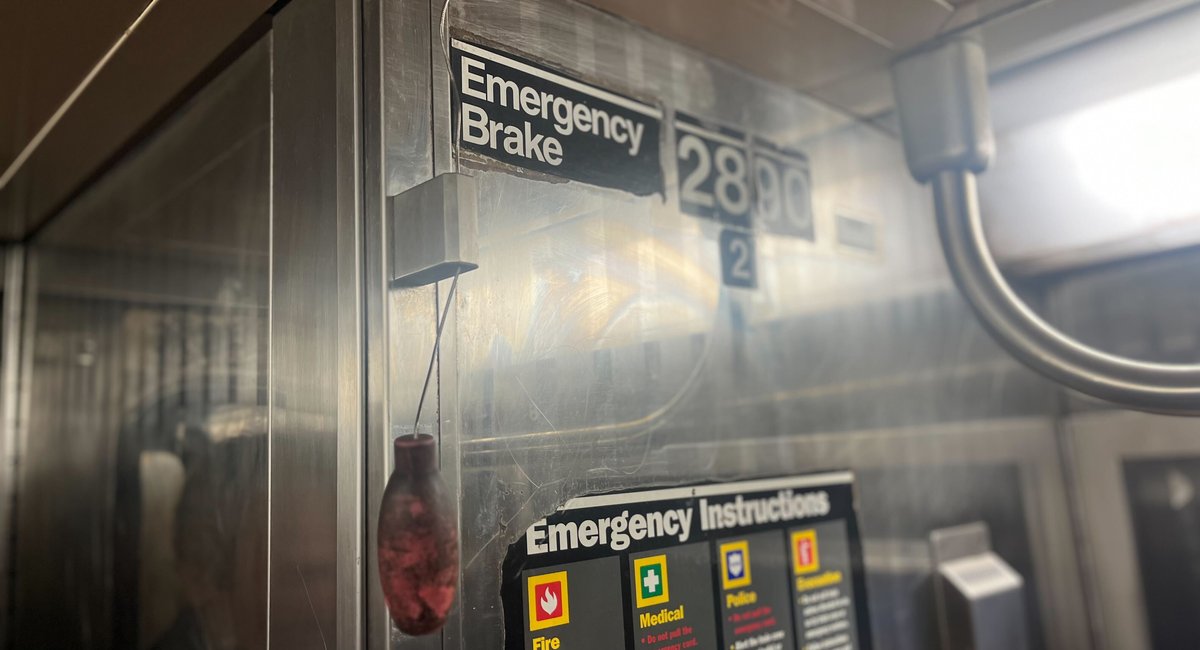In New York City, it only takes the pull of a handle to bring a subway train to a screeching halt. It’s so easy, in fact, that vandals do it hundreds of times per year.
The most recent incident where a subway emergency brake caused mayhem was last month, when a vandal pulled the cord on a train on the 1 line. The train was disabled, and later derailed.
MTA Chair Janno Lieber said emergency brakes on subway trains were pulled 1,700 times last year — but only 30 of those instances were for legitimate emergencies.
All those prank pulls can add up and cause hours of delays. Dozens of people were injured in January’s derailment, although that was due to an apparent operator error while moving the car with locked brakes to the train yard. Still, it all started with someone pulling an emergency brake.
But the MTA makes it easy: The emergency brake cord dangles at the end of each car on the agency’s older subway trains. On its newest trains, the trigger is tucked away in a small cabinet that is officially referred to as a “Passenger Emergency Handle Unit.” But it’s still in public view and easily accessible.
So why does the MTA leave emergency brake cords hanging out in the open in its older train cars, where they tempt would-be vandals with their bright red swinging handles?
While the Federal Railroad Administration requires them to be in place on trains, that agency doesn’t govern the subway.
An MTA spokesperson said emergency brake cords aren’t required on subway trains, but noted “we’re keeping in best safety practices.”
So when is the right time to pull the brake?
The MTA’s own website leaves it somewhat open to interpretation. It directs riders to “only pull the brake if the train’s continued movement presents an immediate danger to people.”
The New York Times in 2010 reported the MTA said “if someone gets caught between the train’s closing doors, or between subway cars,” it’s a good time to pull the emergency brakes. The grim occasion for that piece was a stabbing that took place on a subway train that was between stations. Someone pulled the emergency brake, trapping everyone in a dark tunnel with the knife wielder.
An MTA spokesperson clarified that examples of when pulling the brake would be appropriate include when a parent or child are separated or if someone is having a “medical episode.”
Curious Commuter
Question:
Why is the G train so short?
–VS, from Brooklyn
Answer:
Most of the city’s subway trains have 10 cars — but the G line only runs with five. And the shorter trains often require riders to sprint down a platform to board. The MTA says this isn’t an accident, and claims there aren’t enough G train riders to justify longer trains. “The MTA routinely monitors ridership on all lines to assess crowding and the G train is not experiencing a capacity issue,” spokesperson Joana Flores wrote in a statement.
The MTA recently boosted midday and weekend service on the G line, while evening service is supposed to run every 8 minutes.
Have a question? Follow @Gothamist on Instagram for special opportunities and prompts to submit questions.
If you’re not on Instagram, email cguse@wnyc.org or snessen@wnyc.org with the subject line “Curious Commuter question.”
You must provide your first name and borough (or city if outside of NYC) to have your question considered.

Leave a Reply